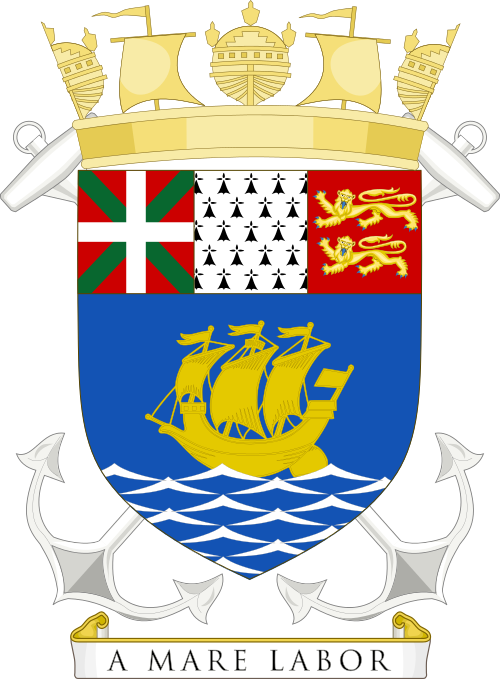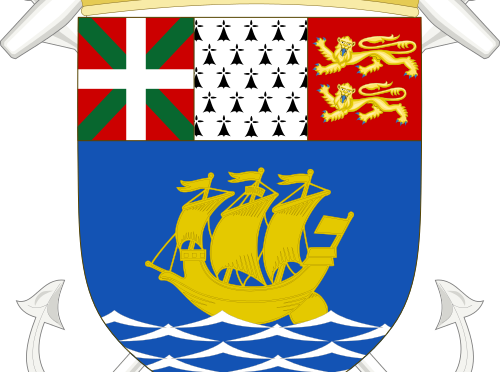On the furthest reaches of Canada’s eastern coast lies Saint Pierre and Miquelon, a small group of islands just south of Newfoundland. A French Territorial Collectivity, the islands are the last remaining vestige of New France, at least in North America – the people are guaranteed French citizenship. However, perhaps more interestingly, if you look at their coat-of-arms, you’ll notice that the ikurriña is displayed prominently, a monument to the Basque history of the islands.

- Humans have visited these islands for at least 8000 years, with the Beothuk and Paleo-Eskimo or Pre-Inuit peoples at least stepping foot on the islands, though it seems that, if they ever settled the islands, by the time Europeans arrived, there were no inhabitants. By at least 1517, Basque whalers, primarily from Donibane Lohizune (Saint Jean de Luz) and Ziburu, had found the islands and, alongside Normans and Bretons, began to settle the islands in the 17th century. Captain Juanes de Liçaurdi, commissioned by shipowner Adam de Chibau from Donibane Lohizune, established a fishing station in the south of the islands between 1602 and 1611.
- The fishing industry, in decline throughout the nineteenth century, was revitalized by an influx of new Basques, who hailed primarily from Getaria (Ghétary-Bidart), Donibane Lohizune/Ziburu (Ciboure), Urruña (Urrugne), Hendaia (Hendaye) and Senpere (Saint-Pée).
- The name Miquelon is thought to be of Basque origin, likely related to the name Mikel. Though, the true origin seems lost to time.
- Even today, there are vestiges of the Basque history of the islands. Pelota is a popular sport, and the Basque cultural group on the islands – Zazpiak-bat – takes its name from the fronton on the island of Saint Pierre. Every year, the islands hold a Basque festival, featuring traditional dance and sporting events. There were even traces of the Basque language into the twentieth century.
- As a final testament to that long Basque history, there are numerous Basque surnames associated with the inhabitants of the islands, names such as Amestoy, Bildosteguy, Doyharcabal, Errecart, Gastambide, Hiraburu, Iturbide, Jaureguiberry, Larranaga, Mendizabal, Oyarzabal, Puchulutéguy, Sabarotz, Telletchia, Uzandizaga, and Zagaramurdy.
- During World War II, there was a bit of an international dust up when Free France, the French government-in-exile, under the orders of General Charles de Gaulle, took the islands from the Nazi-sympathizing Vichy government. The United States decried this use of military power in the Americas by a European force, contrary to the Monroe Doctrine, but the incident seems to have been just as suddenly forgotten.
Primary sources: Martínez Artola, Alberto. Saint-Pierre-Et-Miquelon. Enciclopedia Auñamendi, 2020. Available at: http://aunamendi.eusko-ikaskuntza.eus/es/saint-pierre-et-miquelon/ar-153781/; Wikipedia; Wikipedia; The Basques of Saint Pierre and Miquelon by Marc Cormier
Discover more from Buber's Basque Page
Subscribe to get the latest posts sent to your email.



One thought on “Basque Fact of the Week: Saint Pierre and Miquelon”